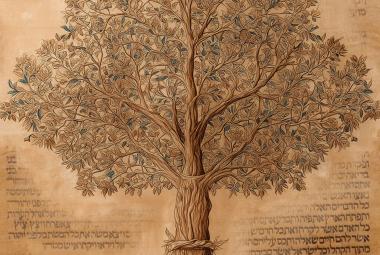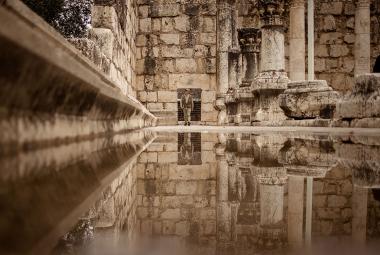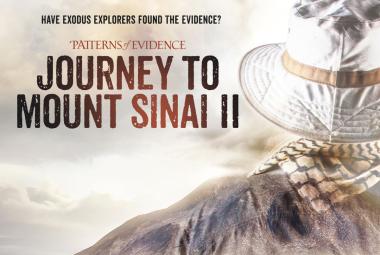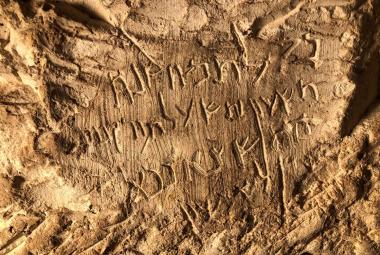At our orientation evening before the start of every Koinonia House B.A.S.E. Tour, I will give a little speech to level set our group’s expectations. Our desire on each tour is to create an opportunity to experience the authenticity of the Bible in the Land of the Bible. In the interest of showing as many genuine sites as we can, I usually start off by saying, “If they built a church over it, nothing happened there.” Therefore, we do not spend much time visiting the traditional Christian sites. Instead, we spend most of our effort taking our explorers to the places of actual history that can be examined and experienced firsthand.
The Sherds of Shiloh
Before the construction of the Temple by Solomon in Jerusalem, the Tabernacle stood in Shiloh, which is located in the ancient region in Samaria, for a full 369 years.
The Book of Joshua tells us,
“Now the whole congregation of the children of Israel assembled together at Shiloh, and set up the tabernacle of meeting there.”
Joshua 18:1
While Shiloh’s fortunes varied over this time, it was the only place that served as a national religious center for the Jewish People during this period – the era of the Biblical Judges. Therefore, this would become the final resting place of the Tabernacle that led the Children of Israel during the forty-year wandering in the wilderness. After the loss of the Ark of the Covenant during the defeat of the army of Israel by the Philistines,1 Shiloh declined in importance and eventually was destroyed or abandoned. In fact, Psalm 78:60 tells us that God “forsook the Tabernacle of Shiloh.”
The first time I visited the proposed site of Shiloh, I was very skeptical as my first impressions led me to believe that much of what I was seeing was somewhat contrived. Honestly, there was not much to see except a visitor’s center, some ancient foundations, modern buildings, and a few diagrams describing what the city of Shiloh might have looked like. As we walked to the site with a guide, he mentioned that they knew this was most likely the real Shiloh because of the thousands of pottery sherds that were concentrated in this particular area.

After I returned from that tour to Israel, I did some research on the surrounding area of this proposed site. According to the Armstrong Institute of Biblical Archeology, “Archaeological evidence from Tel Shiloh indicates that the city was a religious center during the time of Joshua (early part of the Late Bronze Age, 1550–1200 BC). They have found sacrificial animal bone deposits and cultic vessels dating to this time.”2 This research caused me to reconsider my initial snap assessment and to contemplate the importance of the plethora of pottery sherds all over the site. Literally, as you walk on the pathways, you see hundreds of tiny pieces of pottery all over the site.
During my April 2023 visit to Shiloh, I asked the guide if it was okay to pick up some of these pottery pieces. He said, “Yes! They are everywhere.” That gave me the idea to tell everyone on our tour to find a piece or two along the walkways and take it home with the assurance that they were holding a piece of history that was from either the Age of the Judges (13th to 12th centuries BC), Second Temple Period (516 BC–AD 70) or as new as the Byzantine Period (AD 330 to 1453). At any rate, they were told that they would have an authentic relic from a Biblical site that didn’t cost them a fortune. It was fun to see the excitement as they scurried around, picking up their piece of history that was destined for a story or two when they got home.
A Surprise in Jerusalem
On one of the last days of our 2023 April Tour, we visited the City of David Sifting Project. As we were all engrossed in our grimy volunteer labor across the outdoor shelter, I could see the staff members rushing to a huddled gathering of K-House Tour members. I could see and hear the excitement mounting, so I moved closer to hear one of the experts declare, “Amazing! This is very rare!”
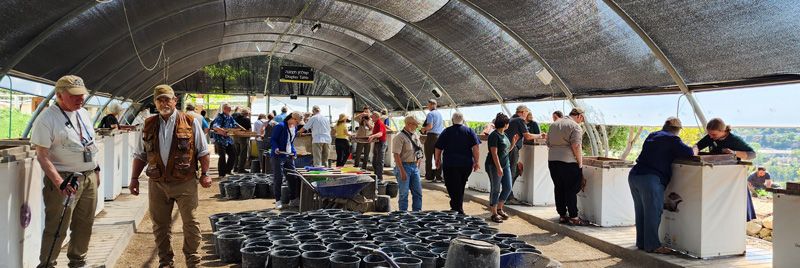
“What? What did you find?” As I quickly moved closer, I witnessed a senior staff leader cradle a small smooth object in his hand like a rare jewel. “What did you find?” I asked the crowd again. “It’s a bulla” they shouted back to me. Like the parting of the Red Sea, our tour members then made a wide pathway for the precious treasure to make its way from the wet-sifting table to the inspection area for further examination and formal cataloging.
The Sifting Project
“In the late 1990s, the Jerusalem Islamic Waqf, the trust that manages the Islamic structures on the Temple Mount, conducted a construction project without archaeological supervision—violating the State of Israel’s antiquities laws and the understanding between Israel and the Waqf that no excavation takes place on the Temple Mount. The Waqf had bulldozed a section in the southeastern corner of the Temple Mount to create a stairway down to an underground vaulted structure known as Solomon’s Stables as part of the conversion of the space to Al-Marwani Mosque. Hundreds of truckloads of archaeologically rich soil were dumped into the Kidron Valley just east of the Temple Mount.
This debris became the subject of study for the Temple Mount Sifting Project. After the Temple Mount soil had been dumped, archaeologist Zachi Dvira and his then-professor at Bar-Ilan University, prominent scholar Gabriel Barkay, began the project to systematically study the soil that had been disturbed from its original context.”3
As you can imagine, this produced a golden opportunity to examine the once-forbidden ancient rubble from the Temple Mount complex.

Over the years, this effort has been spread to include the sifting of the rubble from the City of David Project. On many of our Koinonia House B.A.S.E. Tours, we take our explorers to one of these sifting sites to allow them the chance to participate in the investigation of this precious rubble. As the rubble releases its treasures of two-thousand-year-old pottery sherds, Roman glass fragments, and a host of other odd old things, the excitement always rises. It is really fun to take the bucket of a water-soaked mixture of dirt, rocks, and miscellaneous debris, pour it out on a screened table and then begin the forensic dissection in search of an ancient artifact. With the careful application of sprayed water, we allow our fingers and eyes to diligently survey this mess in an attempt to find a piece of history lost among the slurry.
It was on our 2023 April Tour that the sharp eyes of Sheryl Griesinger spotted a small smooth object nestled among the fine sediment in her sifting tray. The tray had already been cleared by staff and was about to be taken away and added to the pile of already-examined debris. Sheryl “happened” to take one last glance at the tray when she made her discovery. After identifying her find to one of the volunteer staff members, the excited shouts began.
What is a Bulla

Ancient clay bullae are Biblical artifacts that have made vast contributions to our knowledge of ancient Israelite history, especially about the people who lived it. “These clay bullae were formed by pressing a seal into a wet lump of clay that secured the string tied around a document. The seal impression served as both a signature and a security measure for the authenticity of the contents. In the fiery destructions that were so common in antiquity, the documents and strings were usually burned away, but the clay bullae were baked hard and therefore preserved.”4 Here we have a physical example of what is referred to as the seven seals in the Book of Revelation, chapter five.

The royal seal of King Hezekiah in the Bible was discovered in the Ophel excavations led by Dr. Eilat Mazar at the foot of the southern wall of the Temple Mount in Jerusalem. “The bulla, which measures just over a centimeter in diameter, bears a seal impression depicting a two-winged sun disk flanked by ankh symbols and containing a Hebrew inscription that reads ‘Belonging to Hezekiah, (son of) Ahaz, king of Judah.’ The bullae was discovered along with 33 other stamped bullae during wet-sifting of dirt from a refuse dump located next to a 10th-century B.C.E. royal building in the Ophel.”5
The Griesinger Bulla
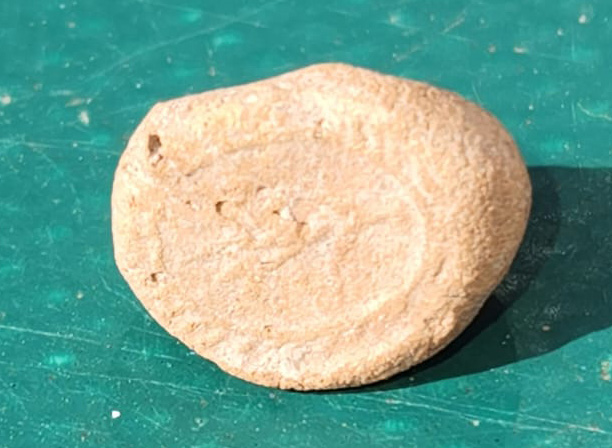
Photo by Eli Shukron.
Within 20 minutes of our departure, I received a text message from our good friend and archaeologist Eli Shukron, who happens to oversee this site. He thanked us for our discovery. I guess the good news travels fast. He then told me that his particular bulla was from the Second Temple Period (516 BC–AD 70). That means that it could have been in use some time from the return of Israel under Nehemiah to the lifetime of Jesus Christ. He went on to tell me that a find of this type only happens every ten years or so.
Imagine the excitement in all of us to think that a piece of important Israeli history may have been discovered by one of our tour family members. This truly was an unexpected pleasure that money could not buy.
Touching the Age of Abraham and David
One of the unique privileges we have on our Koinonia House B.A.S.E. Tours is access to some of the most renowned archaeological experts in Israel. Professor Yosef Garfinkel sits in the Yigael Yadin Chair in Archaeology of Israel.6 He personally guided our April 2023 Tour to Khirbet Qeiyafa.
Khirbet Qeiyafa is a large, fortified hill mound about 32 kilometers (20 miles) southwest of Jerusalem. It stood directly between the geographic boundaries of Israelite and Philistine land, overlooking the Elah Valley, where the battle between David and Goliath occurred.7 Through the use of carbon dating Professor Garfinkel has been able to show that this site matches the period of King David and King Solomon.
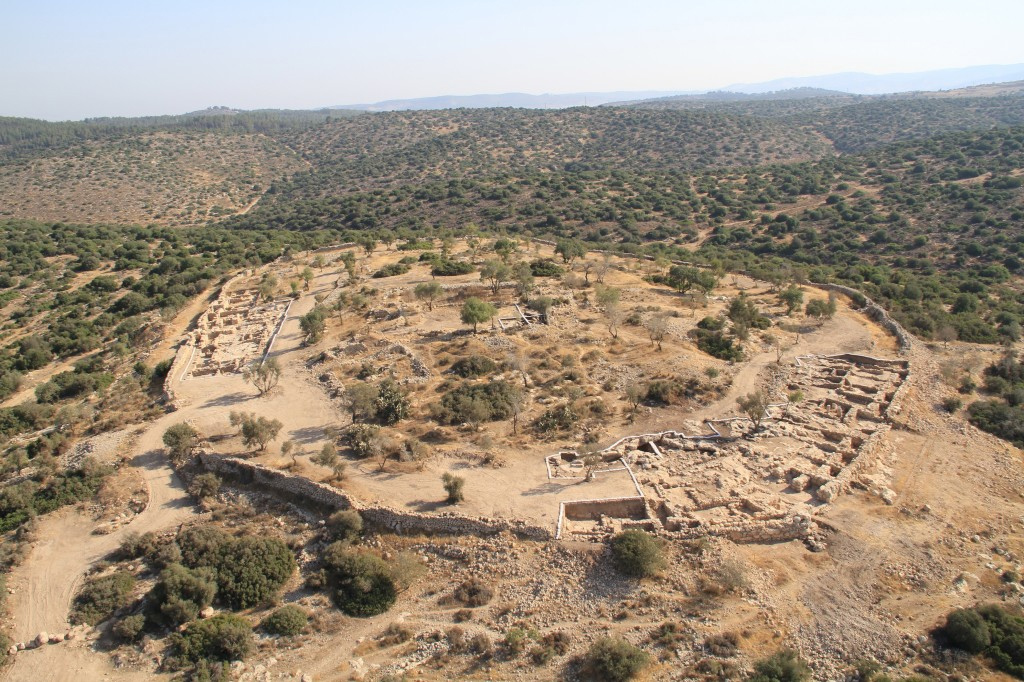
Given my newfound interest in looking for pottery sherds on ancient sites, my eyes are naturally trained on my surroundings in search of some treasure waiting to be found. Like Shiloh, much of this is a very rough and undeveloped site. It doesn’t take long to spot the red-clay artifacts among the dusty ruins. As I bent over to gather my first finding, I noticed a different color piece of pottery that seemed to have some markings on it. It seemed distinct from the other pottery pieces that are spread around site. I poured some water from my bottle to clear the dust, and there definitely seemed to be detailed images on the surface.

Like our experience at Shiloh, I wanted to give our explorers another opportunity to take a bit of history back home with them. After the formal tour was completed, I approached Professor Garfinkel and asked him about the age of the pottery sherds on this site. He replied that it could be from the 10th century BC. “Wow! We could be touching artifacts from the time of King David” I proclaimed to the group.
I then showed him my little find. He immediately reacted by saying, “Where did you find this?”
I pointed to the main entrance of the fortification and asked, “What can you tell me about this piece?” He replied, “This is from the early Bronze Period (2000–1800 BC.)” Surprised, I asked him to clarify the potential age of this finding. He reiterated that it was from the Patriarchal Period. Wow! That’s the age when Abraham was alive. Although Professor Garfinkel spoke of it as commonplace, I had to stand back and contemplate the immensity of this artifact from the past. Perhaps this item was in use during the lives of Abraham, Isaac, and Jacob. Melchizedek was alive during this period and possibly traveling in this area as it was only a day’s walk from Jerusalem.
This little piece was like a siren from the distant past that reminded me that the land of Israel is full of “voices” telling the history of this great and wonderful land. In the end, no amount of passive education can adequately replace the benefits of personal experience.
Notes:
1 1 Samuel 4:2-11
3 https://www.biblicalarchaeology.org/daily/biblical-sites-places/temple-at-jerusalem/temple-mount-sifting-project/
4 https://www.biblicalarchaeology.org/daily/biblical-artifacts/artifacts-and-the-bible/israelite-clay-bullae/
5 https://www.biblicalarchaeology.org/daily/news/king-hezekiah-in-the-bible-royal-seal-of-hezekiah-comes-to-light/
7 1 Samuel 17:2

